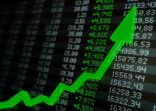The price of the precious metal has weak correlation with the supply and demand from physical mining, Naylor-Leyland said. Instead, gold is traded on the dynamics of the US Federal Reserve interest rate policy, he said.
When interest rates rise faster than inflation, investors would find a cash deposit more attractive because it is delivering a real return after trimming the slight impact of inflation. Therefore, in this situation, gold goes down. If it’s the other way around — inflation is higher than interest rates — then a cash deposit is losing money and then gold goes up, he explained.
Naylor-Leyland said the current trend for gold has priced in the expectation of four interest rate increases in one year. It means that, if the Fed raises the rate four times or less, gold is expected to move higher.
Plotting the gold price on a chart, he said there were five meaningful momentum shifts in the past 25 years and each of these upside or downside cycles lasted a minimum of three years. The longest upward streak recorded during the “super cycle” from 2002 to 2011 after a “golden cross”, which is jargon for the 50-week moving average surpassing the 200-week one.
In the most recent cycle, from 2013 to 2016, the gold price dropped.
After four years of a downturn, a significant pickup is expected this year, suggesting that the direction of the price of gold is heading into a bull cycle, Naylor-Leyland said.
“Any geopolitical turbulence, no matter whether it’s from North Korea or Iran, might hold back one or two interest rate increases, which would benefit the gold price as well,” he added.
The price of gold could slide, however, if the Federal Reserve raises rates more than four times in the near term, which Naylor-Leyland believes is unlikely.
He also sees a value opportunity in mining equities because they have valuations from a bear market phase. He believes mining companies are set to increase earnings.
However, gold is a relatively small holding in his fund, which consists of 84% mining equities and 17% of gold as a physical commodity, according to FE.
The chart shows the performance of the Old Mutual Gold and Silver Fund since its launch in March 2016, versus the gold spot, the fund’s benchmark, and the silver spot price, according to FE.


















